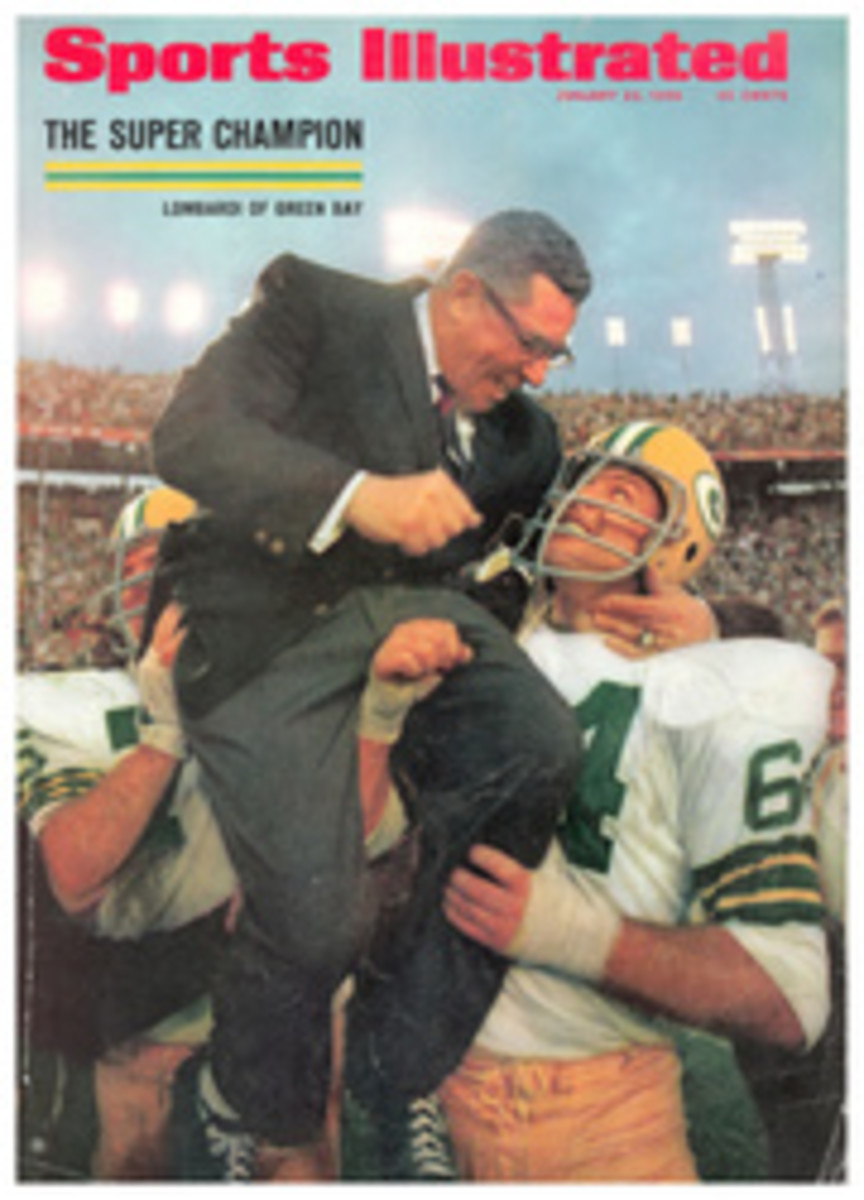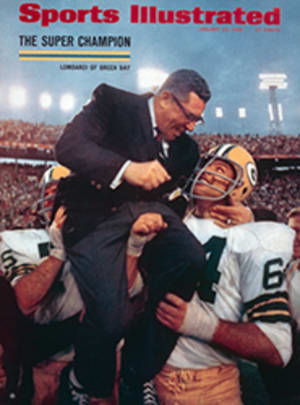
A 107-foot fall to success
The Americanization of John Candler is almost complete. His British accent is still strong and he is not yet a U.S. citizen, but he was a two-time All-America diver at Michigan—and he has uncovered some secrets of the great American pastime of recruiting athletes.
He is now diving coach—under Head Swimming Coach Jack Thompson—at the University of South Carolina, and he admits that his recruiting technique is laughable. It was not intended to be that way, but two years ago when Candler first put on his comedy diving act at the Swimming Hall of Fame in Fort Lauderdale, Fla. several high schoolers in the audience came clustering around, asking about South Carolina and virtually recruiting themselves. Now the act is standard procedure.
During the recent Christmas holiday there were some 2,000 high school and college swimmers and divers in Fort Lauderdale. During his first few days in town, Candler managed to contact only one young prospect, but after he had put on his clown suits and performed, four other high school divers sought him out and asked about South Carolina.
Of course, clown diving isn't all there is to Candler's recruiting. He has that British accent, the memory of a dive off a spindly 107-foot ladder into 10 feet of water and, finally, a remarkable ability to coach.
Does the accent really help?
"Oh yeah," says Debbie Tomberg, dreamily rolling her eyes. Debbie is a freshman at South Carolina and, with Norma Chandler, is one of two girls coached by Candler. For her part, Norma says, "I've trained under lots of coaches, but nobody is like him. He knows how to treat each kid. He's the greatest. I mean, he can even yell at me and I don't mind."
Norma, a high school junior in Fairfax, Va., makes frequent two-hour flights to Columbia, S.C. to spend weekends under Candler's tutelage. She spent last summer being coached by him, will do so again this year and is determined to go to college at South Carolina.
And that dive?
Candler's 107-foot leap into the pool at the Fontainebleau Hotel in Miami Beach in 1964 was part of his performance when he won the first of his three world professional high-diving championships. Just as he did not realize that his comedy acts would bolster his recruiting, Candler had no idea that his spectacular dive would net him anything more than the $750 first-place money. But the show was televised, as were two later championships in Las Vegas. One of those watching was Mike Mayfield, himself a three-time All-America diver when he was in high school in Fort Lauderdale. Another was John Thoder, a 1967 prep school All-America from Bethlehem, Pa. After Candler became diving coach at South Carolina, he met Mayfield and Thoder, and they both remembered him from his televised high dives. Presto! They became the first two divers won by the Candler method of recruiting.
As for coaching, well, acquiring high school divers is one thing, but Candler has to turn them into collegiate winners or his recruiting efforts would be pointless. Last season was his first at South Carolina, and none of the boys he had signed up was yet eligible to compete. Nevertheless, his divers had a perfect dual-meet record and maintained that string through the opening three meets this season; in 17 straight meets Candler's divers finished first and second every time in both one-and three-meter competition. Vic Laughlin, a 25-year-old former sailor and the father of three children, won the Atlantic Coast Conference championship on both boards last year.
Like many other coaches, Candler indoctrinates his divers with some basics of physics and the laws of motion. "We call it applied mechanics," Candler says, "and I'm convinced that no one can be a champion unless he knows things like whether he is diving on a sagittal, vertical or horizontal plane."
Fortunately, he keeps most of his conversation on a less lofty academic plane, and his ability to converse easily with pupils like Norma and Vic—he is only 28 himself—has been invaluable. And since there is a certain amount of fear inherent in diving—it is proportionate to the height of the dive—Candler's background becomes invaluable.
"I know that when you start diving off the tower for the first time, it's rough," he says. "It's an asset to be able to tell my divers that if I could dive safely from 100 feet, they can dive from 33."
Candler's early days as a diver in England (he was born in Scarborough, in Yorkshire) gave no indication that he would become a world champion. "I did everything wrong," he recalls, "but the coach told me I could come back if I wanted to." He came back and in 1960 and 1964 dived for Britain at the Olympics; in 1964 he finished ninth off the three-meter board.
After graduating from the University of London as an aeronautical engineer, he took a job with a British helicopter corporation. "It wasn't what I wanted, though," Candler says. "There I was, one of 400 draftsmen lined up row upon row. I wanted something more lively." When the chance came to enroll at Michigan and join its fine diving team, Candler came to the U.S. Now he is married to an American girl, has one son and, like thousands of other young men, spends his Christmas holidays in Fort Lauderdale. Heeding the advice of his wife, Mary, he does not ogle the battalions of girls gallivanting through town but concentrates instead on divers. Also heeding Mary's advice, he is inclined to feel that his days as a diver off 100-foot towers are over.
"There are too many risks and not enough money in it," he says. "Those 100-foot diving towers are nothing more than tubular metal ladders that fit on top of each other and are held in place by guy wires. When I first looked up at a 100-foot ladder, I felt as anyone else would: it was unbelievable to think of diving off there.
"The first time I was up on one I was standing there shaking, and this guy from television—he was in a bucket at the end of a long crane—started asking me silly questions. Did I know how high up I was? Was I doing it just for the money? Here I was trying to concentrate. You're going 80 miles an hour when you hit the water, and if you don't land right you're a grease spot on the bottom of the pool."
Landing properly is the key to high diving, especially when the pool is only 10 feet deep. (Divers who use the standard 10-meter—or 33-foot—platform need at least 14 feet of water.) In superhigh diving, the trick is to enter the water feet first, which is not as simple as it sounds.
"You've got to go in with semipointed toes," Candler says, with a semistraight face. "If you go in flat-footed, you'll rupture the blood vessels on the bottoms of your feet. If your toes are too straight, you'll knife right to the bottom. And then, once you enter the water, you have to bring your knees up and spread your arms to slow yourself down.
"In Vegas, I once hit the water wrong and tore the tendons behind both knees. I couldn't swim, and I had to drag myself out of the pool. I rolled onto the grass and cried. I was lucky I didn't zero out completely."
Candler is far from being the stereotype of the phlegmatic Briton. He is a high-voltage competitor on all levels, and he can get as riled up as any outgoing American. He speaks of the U.S. as "a paradise for the athlete," yet he can become enraged at the inconsistencies in the judging at diving competitions, something that he attributes largely to "the AAU slump." Several times he has been burned by other coaches' recruiting practices, and he vows grimly "these things won't happen again." It seems a good bet that they won't. Considering Candler's accomplishments so far you come to realize that this chap in the funny suit on the diving board is no clown.
PHOTO

